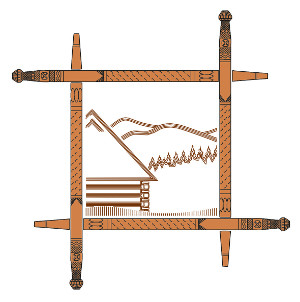Baca Wojciech Gorczowski (around 1885-1951) a native of Kicznia. According to informants, Gorczowski was educated by an elderly and experienced sorcerer from the Kiczni area, others claim that he practiced at the shepherd in Levoča, where he sold the soul to the devil. Gorczowski used a mysterious book, a kind of herbalist, in which "every herb was drawn with herbs". He was accused of lack of honesty and kindness, and even conscious action to hurt people, or to the detriment of others.
Tomasz Chlipała (around 1831 - 1 May 1913) called "Bulanda". This shepherd was considered one of the best wizards in the area. He came from Szczawa, from the Bulanda estate, from which his nickname was coined, but was more closely associated with Lubomierz, where he lived and where he got married. He became famous as a quack and fixer of broken limbs. According to oral communications, he learned magic and healing arts from a sorcerer from the Spiš region of Levoča, whom he himself turned to for help in illness. He had the ability to resurrect dead sheep who died as a result of cast spells. He was also able to "attract" selected people to the hall. He usually used these spells against thieves who he punished in this way. Effectively undone the cast charms. He also participated in duels with other shepherd-sorcerers, wrestling physically, as well as competing with them through spells and spells. He cured and advised on medicine, using the wizard's book, which he, along with the ghost helper, kept in a cell that was added to the hut.
Filos from Jasionów-Olszówka - a shepherd grazing sheep in the second half of the 19th century in the Turbacz glade in Gorce. Apparently, he knew spells, although he prevented them more often than he cast them. When he went out into the halls for the first time in a grazing season for the first time, he always walked around the barracks three times, and drew a cross with chalk on each corner and prayed from behind. These activities were to protect the herd from all evil. For the same purpose, he gave the sheep licking salt dedicated on St. Agates (February 5). He also poured this salt into the milk storage vessels and into the fire, into which he scraped it with a special knife three times. He guarded his flock so that no one could take sheep's milk.
Czarownik Tomasz Guszkiewicz "Gruś" (1824–1910) from Krościenko nad Dunajcem, a shepherd-sorcerer grazing in the second half of the 19th century a flock of approx. 1,200 sheep in the Skałka Hall in the Radziejowa range. He was considered a witch and wizard. "Grusia" was accused of rides in the clouds. When in 1870 a tornado broke the forest in the upper part of the Czarna Krośnica valley in Gorce, all the local residents were convinced that it was his doing and the effect of his rides.
Józef Pitoniak (around 1862–1912) from Łapsze Niżnych, a shepherd and a quack, "he made ftory with the big tsars".
Józef Kapałka (? - 1910) from Łapszanka, who played in Hala Biała in the mid-nineteenth century. When he died suicide (hanged himself), the black cat sat for another week on the roof ridge of the house in which he lived.
Jan Kikla (? - before 1914) from Bukowina Tatrzańska, who lived in Wierch Głodowskie. Apparently, when he was a little boy, he was kidnapped by the conspiracy sorcerers who put him in a "school of magicians." There he studied craft for several years. He was able to effectively chase away hail clouds, stop the downpour during floods, and also recall rain during drought. He had the ability to heal and predict the future. Kikla was a fortune-teller and a clairvoyant.














